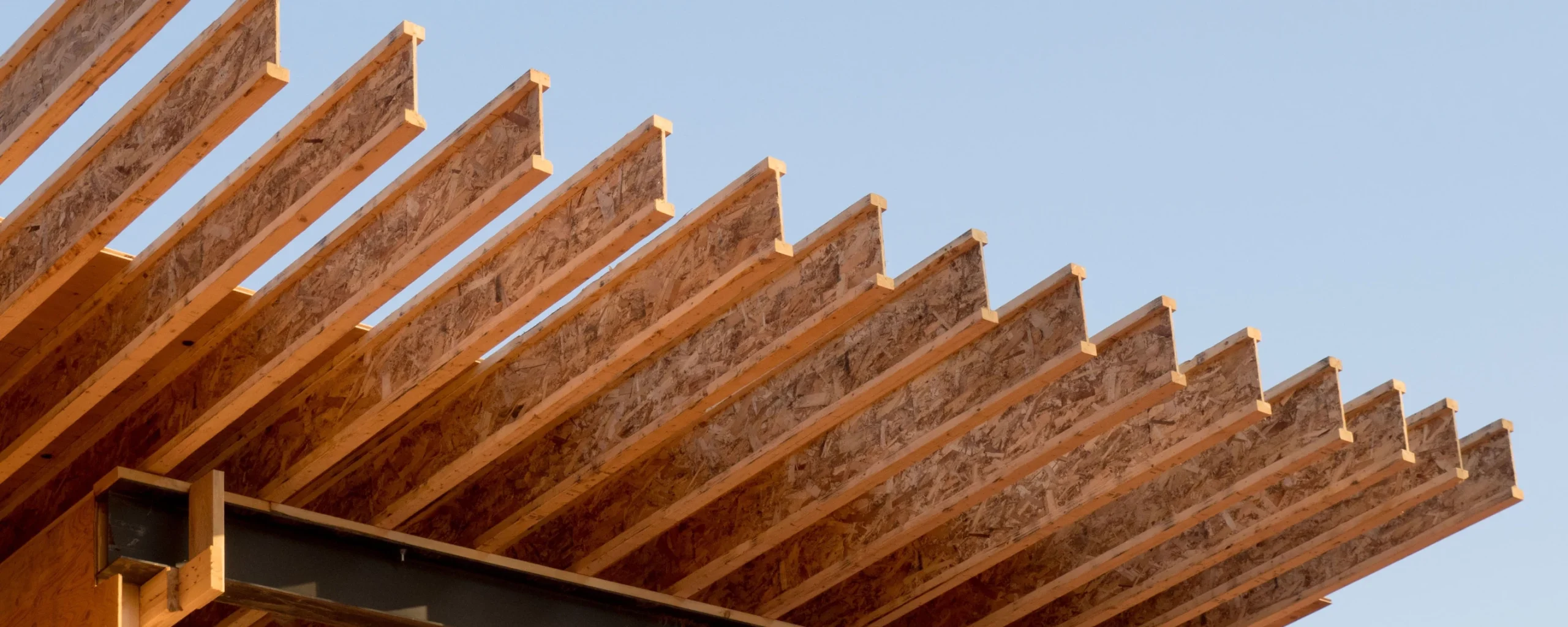What are Roof Joists?
Roof joists are horizontal beams or framing elements that support the roof structure. They are typically spaced at regular intervals and run parallel to one another, providing a framework for the roof deck and the insulation material above. In addition to supporting the roof, roof joists help distribute the weight of the roof evenly across the walls and supporting structures. These joists can be made of various materials, including wood, steel, or engineered wood products, depending on the type of building and the load requirements.
The Role of Roof Joists in Energy Efficiency
While roof joists may seem like a simple structural element, they play a critical role in the energy performance of a building. Their design, material, and placement can significantly affect how well a building maintains its temperature, reducing the need for heating and cooling systems to work overtime. Here’s how roof joists contribute to energy efficiency:
1. Enhanced Insulation
One of the primary functions of roof joists is to support the insulation layer in the roof cavity. Insulation is a key factor in regulating indoor temperatures by preventing heat loss in the winter and keeping cool air inside during the summer. Roof joists create spaces where insulation materials such as fiberglass, cellulose, or spray foam can be installed. The more efficient the insulation, the less energy is required to maintain a comfortable indoor climate.
When roof joists are properly spaced and designed, they allow for optimal insulation thickness and coverage. This minimizes gaps or air leaks, which can be major sources of energy loss. For instance, poorly installed or insufficient insulation in the roof cavity can lead to drafts, making heating and cooling systems work harder. Thus, choosing the right roof joist system and ensuring it is properly insulated can significantly reduce energy consumption.
2. Airflow Management
Airflow plays a significant role in a building's energy efficiency. Roof joists help facilitate proper ventilation, which is essential for maintaining air quality and preventing the buildup of moisture within the roof space. Adequate ventilation allows warm air to escape from the attic during hot weather, preventing heat buildup that can lead to higher cooling costs. Similarly, proper airflow prevents moisture from accumulating, reducing the risk of mold and mildew growth, which can damage the structure and lead to increased energy costs due to dampness.
In addition to providing support for insulation, roof joists can also be designed to accommodate ventilated spaces. Ventilated roof spaces help create a thermal buffer zone, reducing heat transfer into the living spaces below. This can result in less reliance on air conditioning during hot months, contributing to energy savings.
3. Material Efficiency
The materials used to construct roof joists also play a crucial role in the overall energy efficiency of a building. For instance, engineered wood joists, such as laminated veneer lumber (LVL) or I-joists, are designed to be lighter and stronger than traditional solid wood joists, making them easier to install and more structurally efficient. These materials also tend to have better thermal properties, which can further enhance the building's overall insulation.
Another material consideration is the choice of roofing materials that interact with the roof joists. Reflective or cool roofing materials, when used in conjunction with energy-efficient roof joists, can help reduce heat absorption and lower the cooling load in the summer. By pairing the right materials with a well-designed roof joist system, homeowners can maximize energy savings while enhancing the longevity and performance of their roof.
4. Reducing Thermal Bridging
Thermal bridging occurs when a material that conducts heat, such as metal or wood, spans across the insulation layer, allowing heat to bypass the insulation and enter the building. Roof joists, if not properly insulated or designed, can contribute to thermal bridging, which can increase heating and cooling costs. To combat this, modern roofing systems often use techniques like thermal breaks or advanced insulation materials to reduce thermal bridging through the roof joists.
By incorporating advanced insulation techniques, such as spray foam or rigid foam board between roof joists, builders can effectively eliminate or minimize the effects of thermal bridging. This ensures that heat stays where it is needed, reducing energy loss and increasing overall efficiency.
The Future of Roof Joists and Energy-Efficient Homes
As the building industry continues to evolve, the emphasis on energy efficiency is expected to grow. Innovations in materials and construction techniques are leading to smarter, more sustainable building practices. Roof joists will continue to play an important role in this shift, as they not only support the structure of the roof but also contribute significantly to energy conservation.
For instance, smart materials and advanced framing techniques are being explored to further enhance the performance of roof joists. These materials are designed to offer better thermal resistance, strength, and flexibility, leading to more energy-efficient homes. Additionally, solar panels and green roofing systems integrated with roof joists can transform a traditional roof into a power-generating asset, further contributing to a home’s energy efficiency.
The integration of solar-ready roof joist systems is also becoming more common. These specialized systems are designed to accommodate solar panel installations, allowing homeowners to harness renewable energy without compromising the structural integrity of the roof.
Roof joists are much more than just structural components. They are key players in the creation of energy-efficient buildings, impacting insulation, airflow, material efficiency, and thermal bridging. By understanding how roof joists contribute to energy savings, homeowners and builders can make more informed decisions when designing or renovating their properties. As we look toward a future that prioritizes sustainability and energy conservation, optimizing roof joists and their role in energy efficiency will be essential in building homes that are not only functional but also environmentally responsible.
